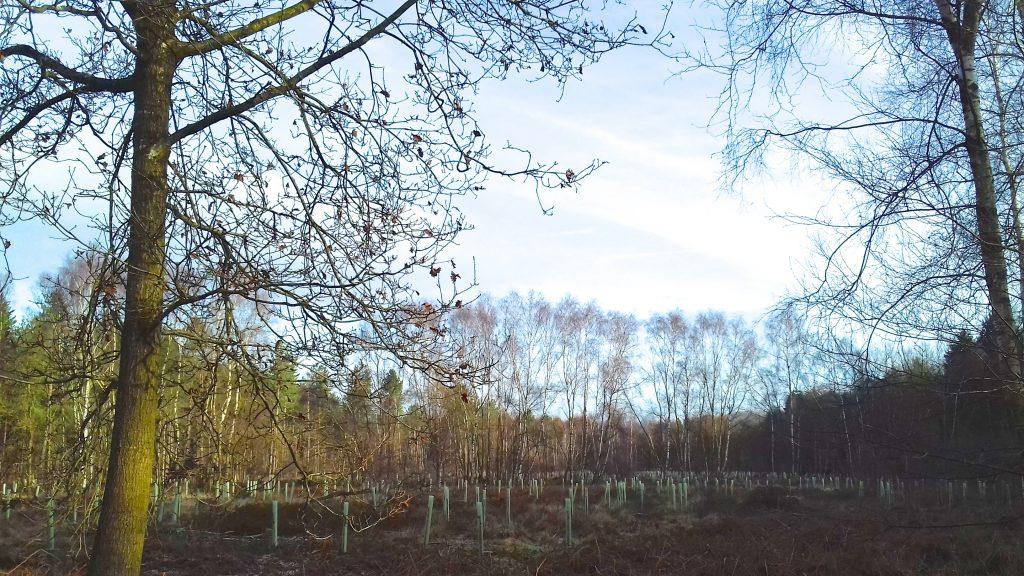
Coughton Park – a designated Local Wildlife Site
‘One of the best acid woods in the county’ and it’s even more important for its acid grassland and heathland – that’s how Coughton Park is described by Warwickshire’s Local Wildlife Sites Project Partnership!
About Coughton Park
Owned by The Heart of England Forest since 2012, Coughton Park is a large mainly coniferous and formerly commercial forest set within the footprint of an ancient woodland. Located between the villages of Sambourne and Coughton, it sits in a partially-wooded rural landscape on the slopes of the Feckenham Ridge. The public bridleway which crosses from east to west across the higher southern half of the wood provides an attractive walk, with a display of bluebells and other wildflowers in spring and butterflies in summer.
Coughton Park has a long history and in the medieval period was part of a far-reaching tract of heathland and woodland making up the royal forest of Feckenham, which extended from the River Severn in Worcestershire to the River Arrow in Warwickshire. With our vision of creating England’s largest new native broadleaf forest – Coughton Park makes a valuable contribution to our expanse of woodland within the wider Forest area.
Coughton Park’s designation as a Local Wildlife Site is primarily due to three main qualities – its diversity of habitats and species, its rarity and its potential value.
Diversity
There are a wide range of plants typical of acidic deciduous oak woodland and acid grassland / heathland mosaics. Over 210 species have been recorded already, of which 10 species found are indicators of ancient woodland, and this is not considered to be an exhaustive list. The wide variety of habitats also contribute to Coughton Park’s interest and value. And with a variety of habitats this in turn can support many other groups of birds, mammals, reptiles, insects (particularly butterflies and moths), mosses, lichens and fungi.
Rarity
The dry acid grassland and heathland mosaic found at Coughton Park is now rare in Warwickshire and as such provides a valuable habitat for many plants including several county rare sedges. Five nationally red-listed breeding birds are found here, and Coughton Park is also of county importance for its butterflies and moths. In addition, reptiles such as grass snakes, slow-worms and possibly common lizards occur here.
Potential value
Restoration of the woodland to an open canopy oak-birch woodland containing areas of heathland and wide heathy rides will enhance this already amazing place for both wildlife and visitors alike.
Wildlife Surveys
The Heart of England Forest volunteers not only play an active part in the practical elements of restoring Coughton Park, but they are also very much involved with surveying the wildlife that call it home. Last year we started in earnest surveying for reptiles, and this year we plan to continue this, as well as starting a new butterfly survey. We’ll also be running some wildlife survey training days to help our volunteers with this important monitoring work.
If you would like to get involved with these wildlife surveys at Coughton Park, or elsewhere in the Forest, then please visit our volunteering page and sign up to our newsletter to stay up to date with regular volunteering opportunities.
There is also the chance to explore Coughton Park on a guided walk led by Head Forester, Stephen Coffey, in August – so keep an eye on our events page for more information and how to book.



